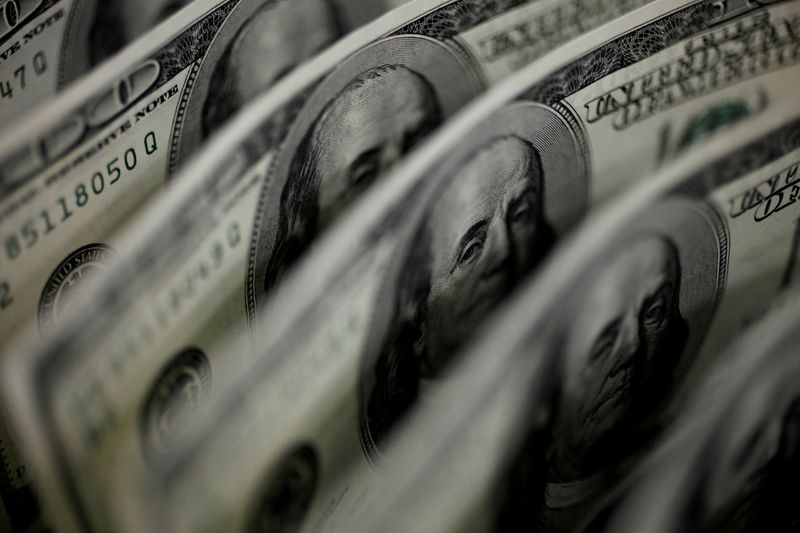By David Henry and Sujata Rao
NEW YORK/LONDON (Reuters) – The dollar eased again on Monday as markets continued to embrace risk following statements from Federal Reserve policy makers last week that they are in no hurry to raise interest rates and pull back support for the U.S. economy.
The dollar index, which measures the greenback against six major peers, was off 0.17% at 91.937 at 1400 GMT. The index last week dropped 0.88%, its worst week since early May, as it turned away from a 3-1/2-month high a week before when traders were positioning for a speedy start of Fed tapering.
“The U.S. dollar has begun August with a heavier tone as risk appetites rebuild,” Marc Chandler, chief market strategist at Bannockburn Global Forex said in a note to clients.
The euro edged up 0.16% against the dollar to $1.8884. It showed little reaction to a Purchasing Managers Index (PMI) reading of July manufacturing that had been seen as a possible mover.
The British pound was up 0.17% to $1.3913 ahead of a Bank of England meeting later in the week.
The move away from the dollar hardened after dovish comments from Fed officials indicated that tapering will probably not come as quickly as markets had begun to expect.
In comments on Wednesday, following a meeting of Fed policy makers, Fed Chair Jerome Powell said considerations of higher interest rates were “a ways away.” The tone was affirmed on Friday when Fed Governor Lael Brainard said Friday “employment has some distance to go” to improve enough for the Fed to back away from support for the economy.
U.S. Treasury bond yields also slipped on Monday to 1.20%, taking real yields – adjusted for inflation – to record lows.
Major U.S. and world stock indexes were up in morning trading in New York as improving prospects for passage of a U.S. infrastructure bill encourage risk taking.
Currency markets seemed ready to hold off on bigger moves ahead of the next U.S. July nonfarm payrolls report, due on Friday. Another possible turning point could come at the end of this month when central bankers meet for an annual symposium in Jackson Hole, Wyoming. Fed officials could use the forum to shift, or affirm, their tone.
A dollar rally “is unlikely to resume in force until a more hawkish Fed narrative takes hold,” Win Thin, global head of currency strategy at Brown Brothers Harriman, said in a note. He added that he is bullish on the dollar and said he expects strong economic growth into the third quarter.
NatWest analysts said “exit strategies” from government and central bank support programs, as well as new lockdowns, will drive currencies in the near term. That’s why investors will watch this week’s meetings at the Bank of England and Reserve Bank of Australia.
While sterling is supported by the possibility of an early end to BOE stimulus, the Australian central bank could well backtrack on its previous decision to taper stimulus, as protracted COVID-19 lockdowns weigh on growth.
The Aussie was up 0.4% at $0.737.


